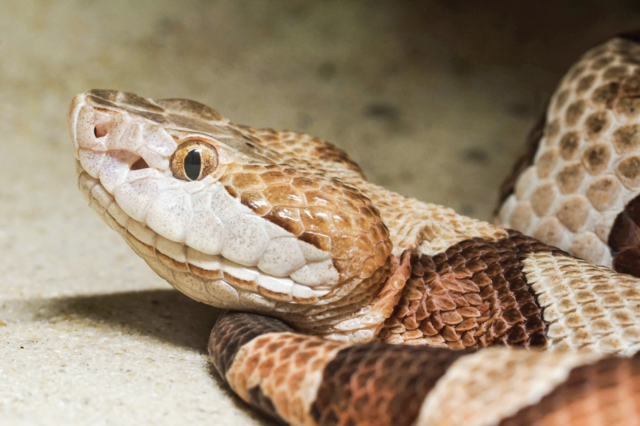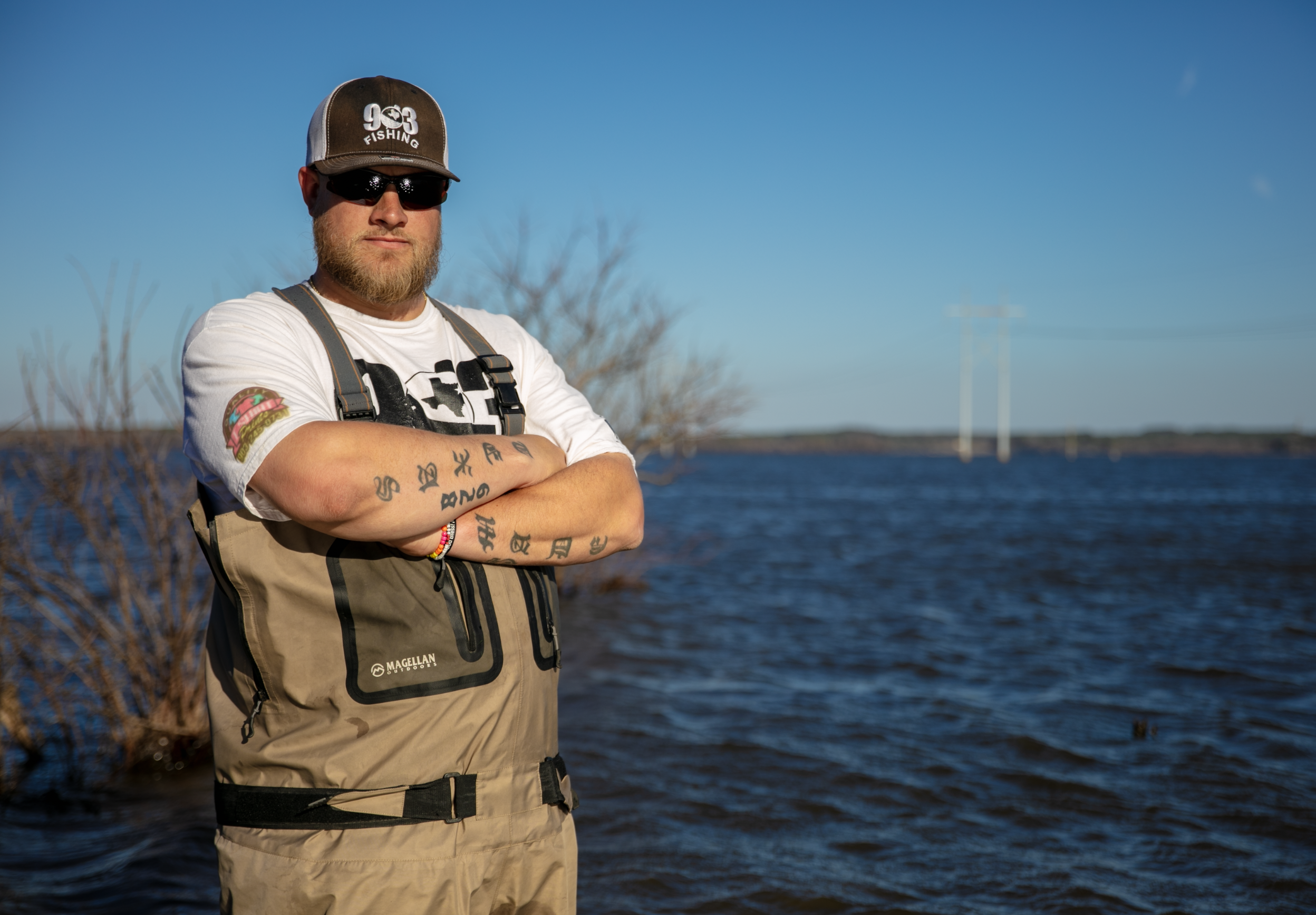by Mark McDonald
Outdoor enthusiasts and rural landowners are sure to come into contact with a few snakes from time to time. Being familiar with these creatures will allow you and your family to more safely enjoy the outdoors by being educated about the good qualities and necessary functions of all snakes. I will also share some information on how to control harmful snakes in areas frequently used by your family. Read along and learn some common sense snake safety.
Q: Are snakes dangerous?
A: Yes, all snakes are dangerous. They can all bite you, cause a heart attack, or make you trip and hurt yourself if you are afraid of them. The solution is to gain respect and lose your fear of snakes through education and experience.
Q: How many poisonous native species of snakes exist in the southeastern U.S.?
A: Four. They are Water Moccasins, Rattlesnakes, Coral Snakes, and Copperheads.
Q: Which species has the most toxic venom?
A: The Coral Snake has one of the most potent venoms in the world. They are very dangerous to humans.
Q: Which snake species in East Texas is most likely to require long-term hospitalization as treatment?
A: The Water Moccasin. It is the only venomous water snake in North America.
Q: Which snake species is responsible for most of the human bites in East Texas?
A: Copperheads.
Q: Which snake species is poisonous, yet the most gentle and least likely to bite a person, and is protected by law in Texas?
A: The Timber Rattler.
Q: Which snake is the heaviest species of all native snakes in the U.S. by length?
A: The Timber Rattler.
Q: Which poisonous snake has no true fangs and its bites are extremely rare?
A: The Coral Snake
Q: Do snake traps and repellents actually work?
A: Yes.
Q: Is there a way to limit the number of snakes in my yard, camp, or fishing area?
A: Yes. Keep the area clean of rock piles, heavy brush, brush piles, tall grass and weeds, set snake traps and relocate them, and apply snake repellent around the perimeter.
Q: When are snakes most active?
A: Early mornings, late evenings, and nighttime.
Q: How can I protect myself when hiking in the woods and river bottoms?
A: 1. Wear tall mud boots or snake leggings.
2. Avoid driftwood piles,beaver
dams, beaver huts, culverts, fallen
trees, and brush piles.
3. Carry a long walking stick. It
is twice as effective as a
sidearm and handy for moving
snakes out of the way or killing
them when necessary.
4. Do not wade in isolated water
holes in dry creek beds. In
swampy areas, stay away from
cattails and sawgrass clumps.
Q: Do wild hogs kill snakes?
A: Yes. Snakes make a good snack for feral hogs.
Q: Do minks, weasels, and otters kill snakes?
A: Yes.
Q: Do fish kill snakes?
A: Yes. Bass and Catfish will eat snakes if available.
Q: Will alligators kill snakes?
A: Absolutely. Alligators are the most effective control of snakes in areas where they both reside.
Q: Will hawks and owls kill snakes?
A: Yes. Birds of prey are the second most effective snake control predator.
Q: Does herbicide hurt snakes and affect the population?
A: Herbicides definitely lower the population of non-poisonous, egg-laying snakes, and eliminate hiding places of poisonous snakes and hurt their habitat.
Good Qualities of Snakes
Too many snake species are now endangered or threatened due mainly to habitat loss. The beauty and diversity of any species is a glimpse into understanding the creative, artistic power of God. I believe every species has a right to exist, but also under the control and authority of man for our benefit, not harm.
Snakes control bugs. Snakes control mice and rats. Snakes even control each other! The Blue Indigo Racer is almost extinct in East Texas and other southern states. This is a shame because this beautiful serpent hunts and eats poisonous snakes. Snakes protect certain plants. Snakes provide food for many different animals. Fish, birds, and reptiles all eat snakes. Our original settlers ate a lot of snakes, as did the American Indians across Texas and the Southwest.
Folklore, stories, history, and natural history studies are all improved by this creature. The more we study any creature, the less we fear it. The more we respect it and control it, the safer we are around it.
Means and methods for controlling snakes.
1. Keep water weeds controlled
around docks and swimming areas.
2. Keep brush piles and wood piles away from the house and mow around them.
3. Keep grass short. Maintain a two-foot distance between the house and shrubs.
4. Domesticated cats, chickens, guineas, and goats are natural yard and barnyard defenders against snakes.
5. Erect a perch pole nearby for owls and hawks to hunt.
6. Always have a sharp hoe or shotgun with birdshot available and ready.
7. If your pond or lake is home to alligators, leave them be.
8. Call a professional for help to trap or repel them. My wife and I designed a very effective snake repellent. If commercial repellents aren’t working, call me.
As a wildlife biologist, trapper, and property management professional, I work every day in swamps, woods, river bottoms, beaver ponds, dams, and other prime poisonous snake habitat. I see them daily while trapping beavers and will only kill them when absolutely necessary. I usually just throw them out of my way with a long walking stick or hiking pole. If I find them in an area where I am making a beaver set and I know they will return, I will kill them. I rarely use a gun and kill a few hundred a year on average. I trained myself for so long to avoid close contact and getting bitten that it’s second nature. Once trained, it’s impossible to untrain yourself or get careless.
When I was in Alaska prospecting for gold, I saw men digging in driftwood piles, reaching under boulders and in holes in the bank, and wading in water plants while panning for gold. I could not force myself to look for gold in those areas because of snake training, and … there are NO SNAKES IN ALASKA! Even after three years of prospecting, I could not untrain myself from snake safety and recognizing the habitat.
My brothers are surveyors by trade. Two of them have been bitten. One spent a month hospitalized from the bite of a Water Moccasin and almost died. The other has been bitten on three different occasions by Copperheads and only required medical treatment once.
I’ve caught numerous poisonous snakes barehanded over the years for the medical community and educators. I never got bit. Now that I am older, I use a catch tool or avoid them. I was foolish and God protected me in my ignorance. Now I rely on wisdom and caution. I don’t live in fear of snakes and neither should you. Be careful, learn to understand their habitat, and train yourself on proper snake response, and you will remain safe while enjoying the outdoors.












